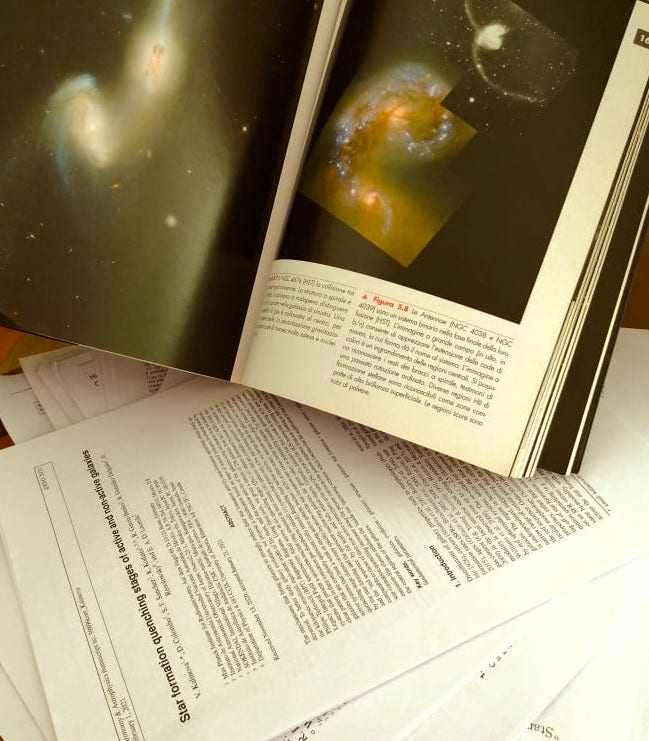About Me
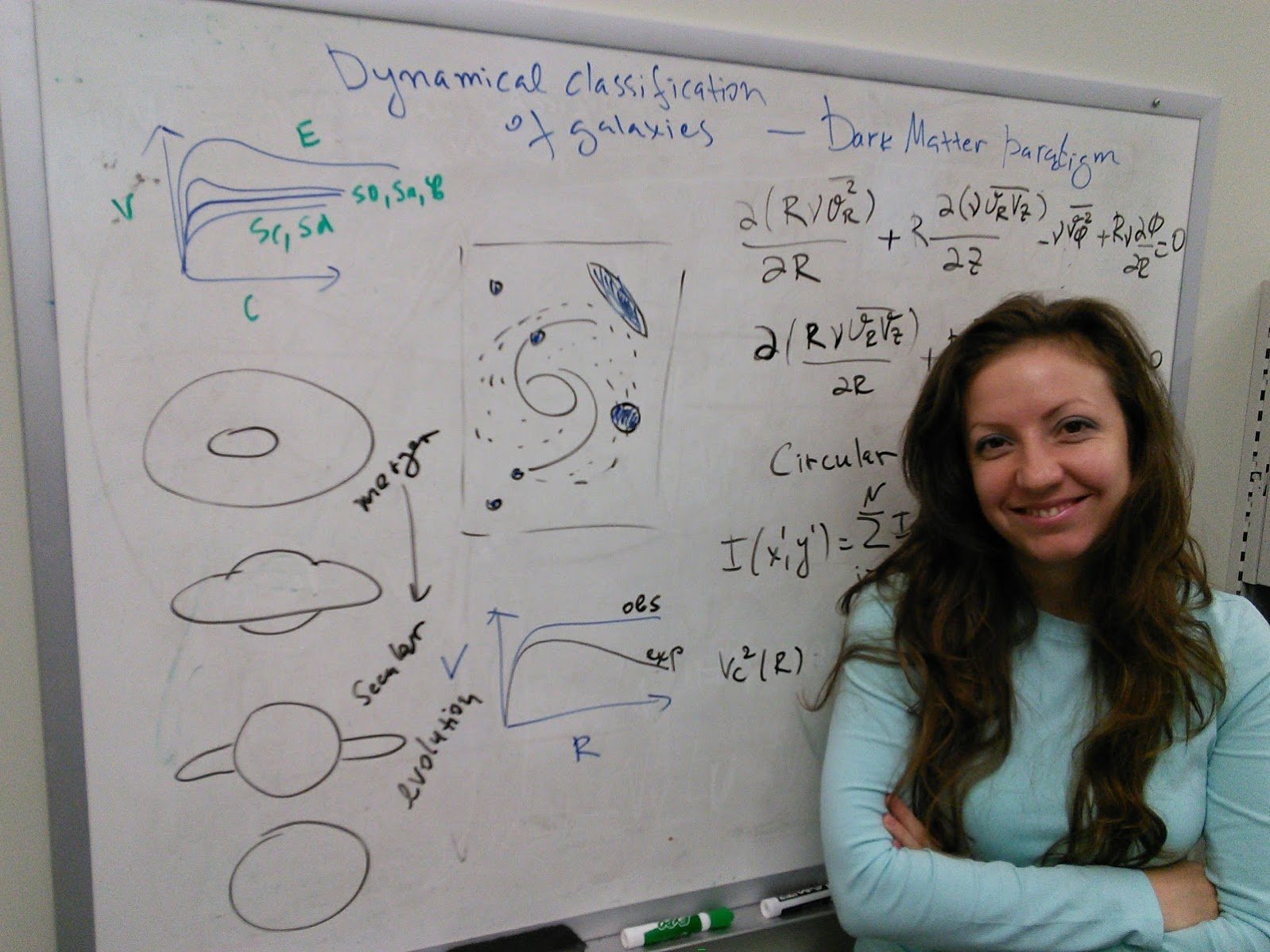
Welcome to my website! My name is Veselina Kalinova and I am a postdoctoral
researcher at the Max Planck Institute for Radio Astronomy, Bonn (Germany) since 2015.
I am currently working on the exploration of the influence of galaxy dynamics on the
star formation quenching of the nearby galaxies.
Previously, I was an Avadh Bhatia Postdoctoral Research Fellow at Alberta University,
Edmonton (Canada) in the the period 2014-2015. I obtained my PhD degree in April 2014 at
the Max Planck Institute for Astronomy, Heidelberg (Germany) on the topic
"Mass Distribution of Galaxies from SAURON and
CALIFA Stellar Kinematic Maps". Earlier, I graduated as Master of Science in Astrophysics in 2010 and
Bachelor of Science in Physics in 2009 at Sofia University (Bulgaria).
Research Interests: galaxy dynamics, galaxy evolution, star formation,
nuclear activity of galaxies, dark matter, optical spectrosopy, single dish and interferometry
in centimeter and millimeter radioastronomy,
machine learning
CV
| Period |
Position & Institution & Topic |
| November 2015 - current |
Postdoctoral Researcher
Max Planck Institute for Radio Astronomy, Bonn (Germany)
Working on Galaxy Dynamics and Star Formation Quenching of Nearby Galaxies
|
| July 2014 - August 2015 |
Avadh Bhatia Postdoctoral Research Fellow
University of Alberta, Edmonton (Canada)
Working on Circular Velocity Curve Classification of Nearby Galaxies using
Principal Component Analysis, Markov Chain Monte Carlo (MCMC) and clustering techniques
supervisor: Prof. Dr. Erik Rosolowsky
|
| October 2010 - April 2014 |
PhD degree in Natural sciences (Astronomy)
Heidelberg University (Germany) & Max Planck Institute for Astronomy, Heidelberg (Germany)
PhD thesis title: "Mass Distribution of Galaxies
from SAURON and CALIFA Stellar Kinemtics Maps"
supervisor: Prof. Dr. Glenn van de Ven
|
| October 2009 – July 2010 |
Master degree in Astrophysics
Sofia University "St. Kliment Ohridski", Sofia (Bulgaria)
Master thesis title: "Gravitational abberation of galaxy clusters"
supervisor: Ass. Prof. Dr. Galin Gyulchev
|
| October 2005 – July 2009 |
Bachelor degree in Physics
Sofia University "St. Kliment Ohridski", Sofia (Bulgaria)
Bachelor thesis title: "Dark matter in galaxies and galaxy clusters"
supervisor: Ass. Prof. Dr. Valeri Golev
|
Research
Quenching stages and nuclear activity of nearby galaxies
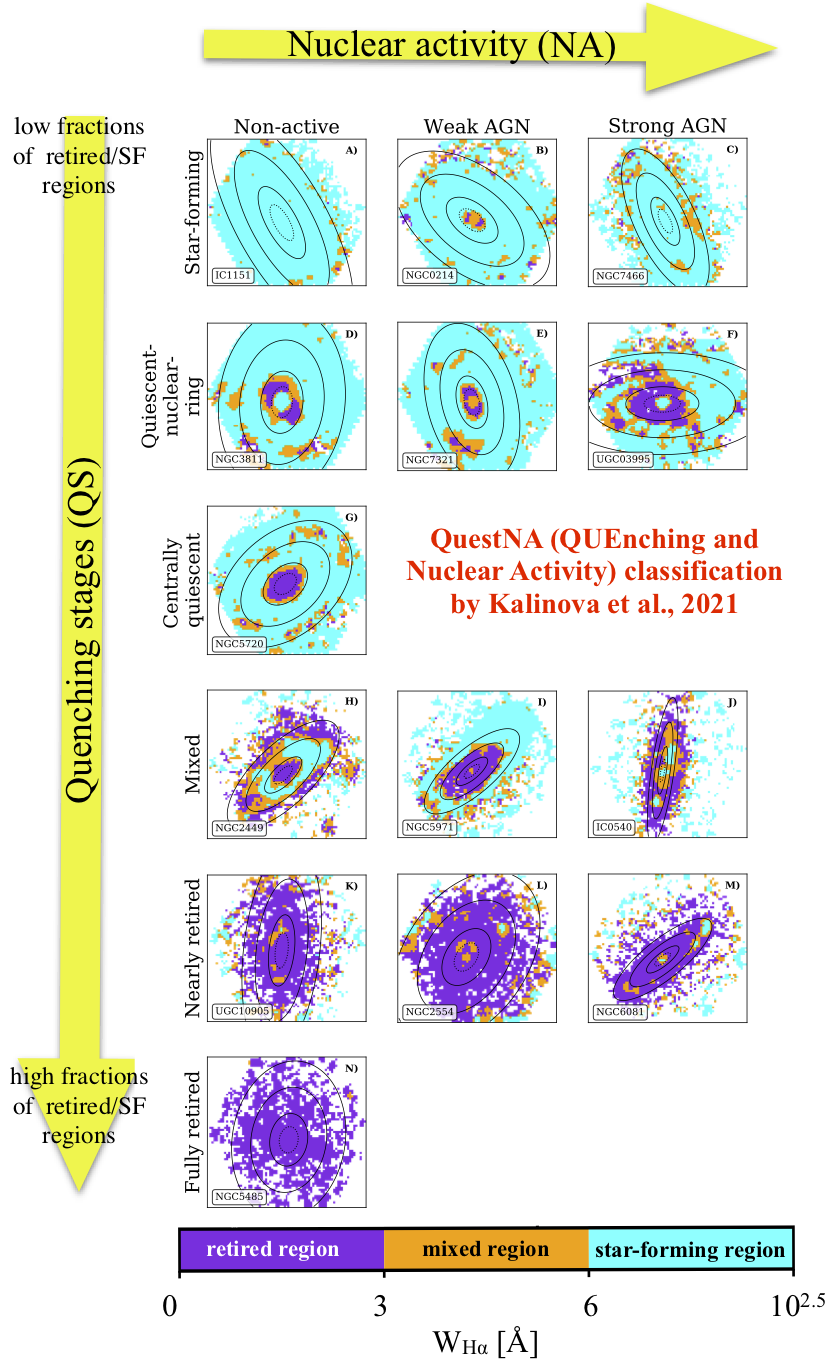
In my recent paper (Kalinova et al., 2021, A&A, 648, A64),
we develope a 2D emission-line classification "QuestNA" taking into account both star formation quenching stages of the galaxies and their nuclear activity.
The rows of QuestNA classification represents the quenching stages (star-forming, quiescent-nuclear-ring, centrally quiescent,
mixed, nearly retired, and fully retired), which represent different snapshots of galaxy evolution.
The ‘retired/star-forming regions’ ratio of the galaxy incresases from star-forming to fully retired galaxies (from the top to bottom).
The columns of the proposed classification reflect the level of galaxy nuclear activity per quenching stage: non-active, weak, and strong AGN (from left to right).
It is interesting to further explore whether QuestNA classification can be considerred as an evolutionary diagram
from star-forming to retired classes or at least whether there is an geneological connection between the different stages.
Circular velocity curve classification from Principal Component Analysis
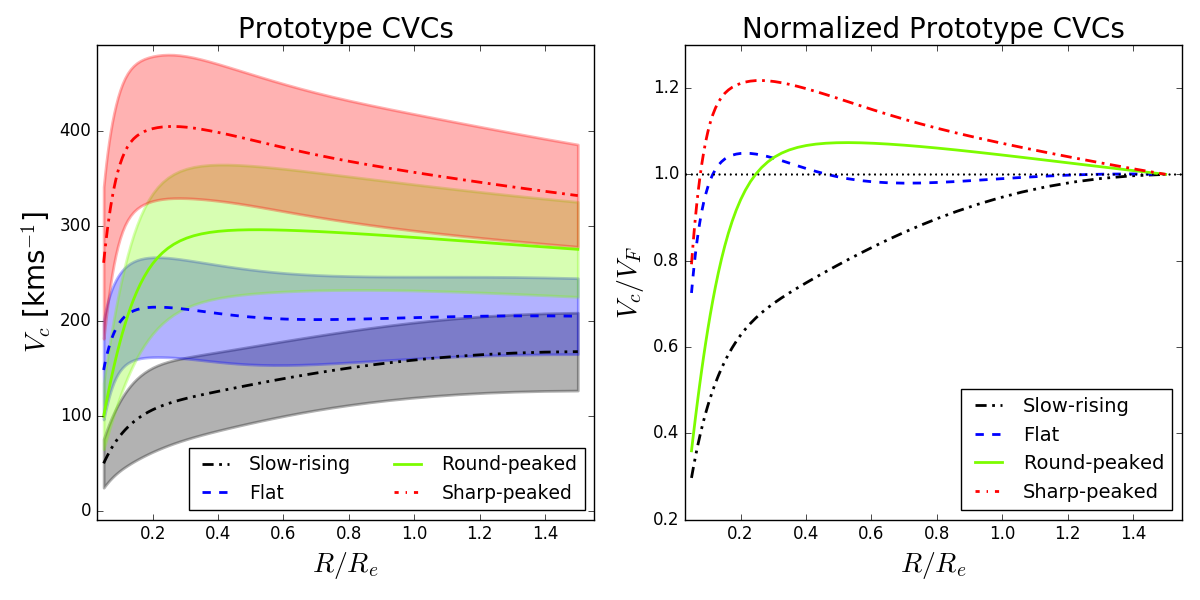
The total circular velocity curve (CVC) of galaxies includes the gravitational potential of stars, gas, and dark matter.
Therefore, CVC is one of the main tools for studying galaxy structure and tracing the fossil records of the galaxies of their past.
In addition, in Kalinova et al. 2017b, we
find that the CVCs of the galaxies trace the evolutionary stages of these systems.
Galaxies that have slowly increasing CVCs are characteristic for young, low-mass, low-metal, high-dark-matter-content galaxies.
While those with steep (sharp-peaked) curves are typical for old, high-mass, high-metal and relatively less-dark-matter-content galaxies.
Flat and Round-peaked classes appear presented by galaxies with intermediate mass, age, luminosity, metallicity, bulge-to-disc ratio,
morphologies and dark mater fractions.
We analyse the CVCs from the de-projected surface brightness of the galaxies, after scaling by a
constant mass-to-light ratio based on stellar dynamics (solving axisymmetric Jeans equations via
fitting the second velocity moment of the stellar kinematics) from
CALIFA survey using 238 galaxies.
We further apply Principal component analysis (PCA) to the CVC shapes and amplitudes to find
characteristic features and use a k-means classifier to separate the circular curves into described above classes.
Inner mass distribution of late-type spiral galaxies
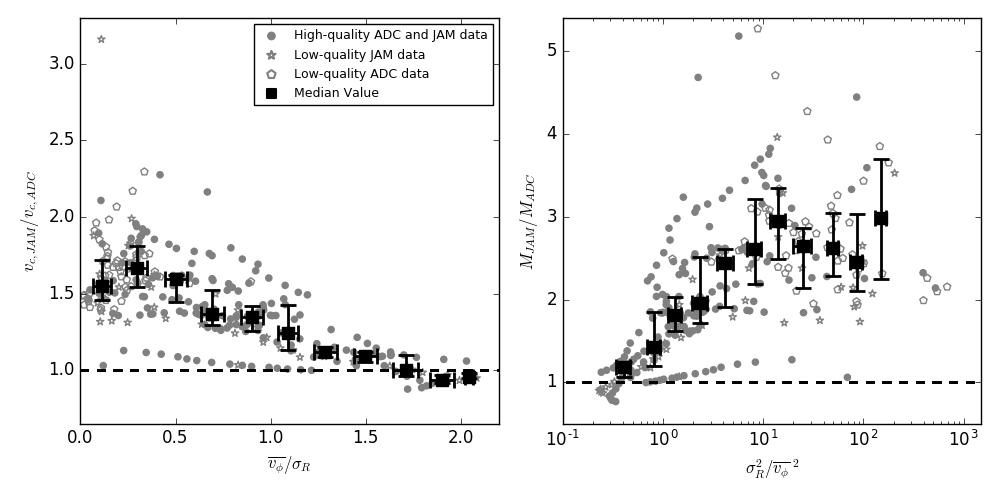
In Kalinova et al., 2017a,
we examine the central mass distributions of 18 late-type spiral galaxies using
two different dynamical modelling approaches - the asymmetric drift correction (ADC) that adopts a thin disc approximation
and axisymmetric Jeans Anisotropic Multi-Gaussian expansion (JAM) model that does a full
line-of-sight velocity integration. We use stellar kinematics maps obtained with the integral-field spectrograph
SAURON
to derive the corresponding circular velocity curves from the two models.
To find their best-fitting values, we apply the Markov Chain Monte Carlo (MCMC) method.
ADC and JAM modelling approaches are consistent within 5 per cent uncertainty when the ordered
motions are significant comparable to the random motions, otherwise if their ratio is lower than 1.5 times,
ADC underestimates the calculated mass of the galaxies and invalidates the thin disc assumption.
Since the stellar masses of the galaxies in our sample are not confined to their disc planes,
it is likely that they have a non-negligible contribution from their bulges and thick discs.
Main projects and collaborations
CALIFA IFU survey
Integral field spectroscopic survey of 600+ galaxies (Sanchez et al., 2012) for exploration of the stellar kinematics,
ionised gas distribution, stellar population and dynamics of the galaxies.
EDGE-CARMA survey
CO(1-0) CARMA follow-up of CALIFA survey
of 126 galaxies (Bolatto et al., 2017) for studying the star formation and molecular gas content of the galaxies.
VLA-uGMRT-CALIFA survey
On-going HI follow-up of CALIFA survey of 72+ galaxies (PI: V. Kalinova, D. Colombo)
for exploration of the neutral gas content and dark matter problem in the nearby galaxies.
APEX-CALIFA survey
Ongoing CO single-dish survey of 500+ galaxies (PI: D. Colombo) for studying the
star formation quenching processes in the nearby galaxies (through integrated properties within one effective radius) from the Main Sequence
of Star Formation to the Red sequence.
Contact
Email: kalinova@mpifr.de
ResearchGate profile: click here
Linkedin profile: click here
ORCID profile: https://orcid.org/0000-0002-2262-5875





